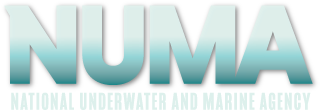Wreckmaster Articles
The HMT Rohna: World War II’s Secret Tragedy
Secrets, secrets, secrets! Why is it our government and other regimes simply call an incident or encounter “classified information” when they don’t want anyone to know about it? Denise Sharp, a historian from Brookeville, Maryland, says, “Their secrets are difficult to unravel unless you have the determination to follow every little clue that might lead to a cover-up.” That’s exactly what she did when discovering that the U.S. government and its military had hushed up the sinking of a transport ship during WWII.
U.S. Life Saving Service Saves Survivors By Land Not Sea
In early days, when ships grounded near shore or became stranded on a rocky coast, there was neither Coast Guard nor means of communication to get help. The only rescue efforts came from the U.S. Lifesaving Service if there was a station nearby. Such was the case on October 11, 1896, when the schooner E.S. Newman ran aground in distressful circumstances.
SS Princess Sophia: Oil Soaked Dog Was the Only Survivor
Unless you’re from Alaska or Canada, chances are you’ve never heard of the SS Princess Sophia, named the “Titanic of the West Coast.” One of the worst tragedies to occur inside Alaska and Canada, the 2,320-ton, 245-foot steel hull passenger ship sank in late October, 1918. Yet, the sinking and loss of 353 lives received little publicity.
Radeau Below: Lake George Holds Oldest Warship
Lake George, a 32-mile-long by two-miles-wide body of water an hour’s drive north of Albany, New York, is an unlikely spot to find the oldest intact warship in North America. But history buffs know all about the roll this radeau, (a French word for raft) played in the French and Indian War, 1755-1763.
The Blockade Runners: ‘Catch Me If You Can!’: Part III
When President Abraham Lincoln proclaimed a blockade of Confederate ports during the Civil War, April 19, 1861, he launched the “cat and mouse” war games in which ships were hellbent on outsmarting each other. Painted the color of a Hatteras fog to remain inconspicuous, while burning smokeless anthracite coal, a long, low “greyhound of the sea” could lose herself against a wooded shoreline. Then, like a rabbit from the bush, she would make her final dash for a protected harbor.
Tankers and Freighters Were Sitting Ducks in Graveyard of the Atlantic: Part II
They’re everywhere, a ubiquitous conglomeration of lost ships the likes of which will never be matched by any other nautical graveyard. The ships, their masters and crews plunged to the bottom of North Carolina’s Graveyard of the Atlantic where a seafarer once declared: “It’s a place to sail, troll and dive, a place where only fish survive, a place that fosters all our fears, a place that harbors a widow’s tears.”
Graveyard of the Atlantic: Part I Submarines
Those who will not venture out into the open sea pay the penalty of never having looked into the bright eyes of danger and at best they know but half of life. The mariners who went down with their ships encountered life headlong and lived it to its fullest blazing a path of glory before them. From the days of earliest New World expeditions, many knew about the Graveyard of the Atlantic and approached it with mixed feelings. Some flaunted it while others feared it, yet they persisted in risking their vessels and lives in its treacherous waters. Some tried to avoid it when venturing into the open sea.
SS Warrimoo: The Ship That Missed New Year’s Eve
In Australia, many names of people, places and things are taken from the Aborigines, native inhabitants that settled the country more than 50,000 years ago. Hence, the SS Warrimoo—meaning Eagle’s Nest or Landing—was chosen for the 345-foot passenger ship launched in England in 1892.
Story of U-1226 Discovery Lingers in Cape Cod Community
Figuratively, I jumped aboard the U-1226 in June, 1993, when it was reported as being discovered in shallow water off Cape Cod, Massachusetts. But I wasn’t the only journalist to get a scoop on this astounding discovery. David Arnold of the Boston Globe, Barry Danforth of the Wall Street Journal, and Joe McVey of the Baltimore Sun joined me “aboard” the shipwreck and we all met our deadlines.
The SS Byron D. Benson: Reluctant Prey in Torpedo Junction
The SS Byron D. Benson is more than just another tanker sunk off North Carolina in the early stages of WW II. The 7,953-ton, 465-foot Tidewater Oil Company ship did her best to avoid sinking in Torpedo Junction where so many other American and Allied vessels were victimized by German U-boats.
All Rights Reserved © | National Underwater and Marine Agency
All Rights Reserved © | National Underwater and Marine Agency
Web Design by Floyd Dog Design
Web Design by Floyd Dog Design
